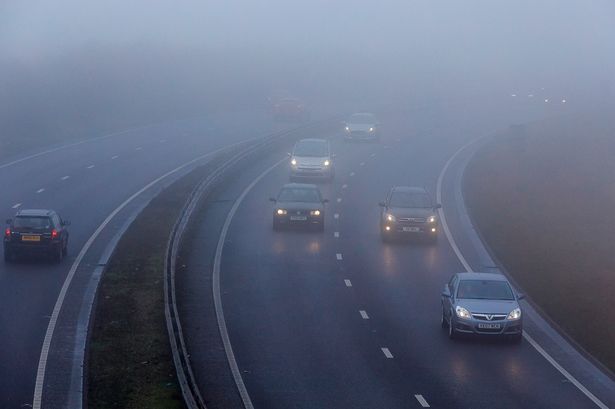The Met Office has issued a warning for potentially hazardous driving conditions during the morning rush hour, particularly impacting the Midlands region. This advisory stems from the presence of low-lying fog, a meteorological phenomenon that significantly reduces visibility and can create challenging circumstances for motorists. The fog, expected to be dense in certain areas, is anticipated to linger for a considerable period, further complicating the morning commute. Drivers are urged to exercise extreme caution and adapt their driving habits to the prevailing conditions.
The formation of fog occurs when the air near the ground cools to its dew point, the temperature at which the air becomes saturated with water vapor. This saturation leads to the condensation of water vapor into tiny water droplets suspended in the air, creating the characteristic hazy appearance of fog. Low-lying fog, as the name suggests, forms close to the ground, often filling valleys and low-lying areas. The specific atmospheric conditions contributing to the current fog event include clear skies, light winds, and sufficient moisture in the air. These conditions allow for rapid cooling of the ground overnight, facilitating the formation of dense fog patches.
The reduced visibility caused by fog poses several significant risks for drivers. The limited sightlines make it difficult to judge distances accurately, increasing the risk of rear-end collisions and making it harder to anticipate potential hazards. The fog can also create a disorienting effect, making it challenging to maintain lane position and navigate effectively. Furthermore, the presence of fog can impact driver perception, making it difficult to accurately gauge the speed of other vehicles. These factors combine to create a heightened risk of accidents, particularly during periods of heavy traffic like the morning rush hour.
The Met Office’s warning underscores the importance of adopting safe driving practices in foggy conditions. Drivers are advised to reduce their speed significantly and maintain a greater following distance from the vehicle ahead. Using dipped headlights is crucial to enhance visibility and make the vehicle more apparent to other road users. However, it’s equally important to avoid using high-beam headlights, as these can reflect off the fog and further impair visibility. Fog lights, if equipped, should be used in accordance with the Highway Code, typically when visibility is below 100 meters.
Beyond these immediate precautions, drivers should also plan their journeys carefully when fog is anticipated. Checking the latest weather forecasts and traffic reports before setting out can help to identify potential delays and allow for adjustments to travel plans. If the fog is particularly dense, considering alternative modes of transport, such as public transportation, or delaying the journey entirely may be prudent. Staying informed about the evolving weather conditions is crucial for making informed decisions and mitigating the risks associated with driving in fog.
In anticipation of potential travel disruptions, it’s also advisable to communicate proactively with employers or anyone who might be affected by potential delays. This can help to manage expectations and minimize any inconvenience caused by the challenging driving conditions. Ultimately, prioritizing safety and exercising caution are paramount when navigating foggy conditions. By adhering to the recommended safety measures and staying informed, drivers can significantly reduce the risks associated with driving in fog and contribute to a safer commute for everyone. The combination of reduced visibility, increased traffic volume, and potentially slippery road surfaces due to condensation necessitates a heightened level of awareness and a proactive approach to safety.














